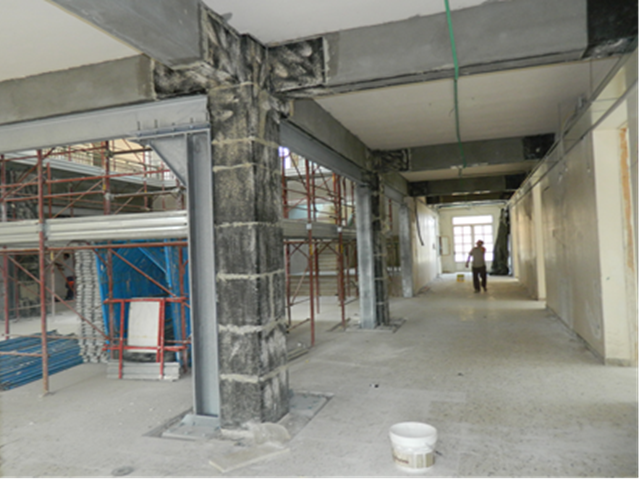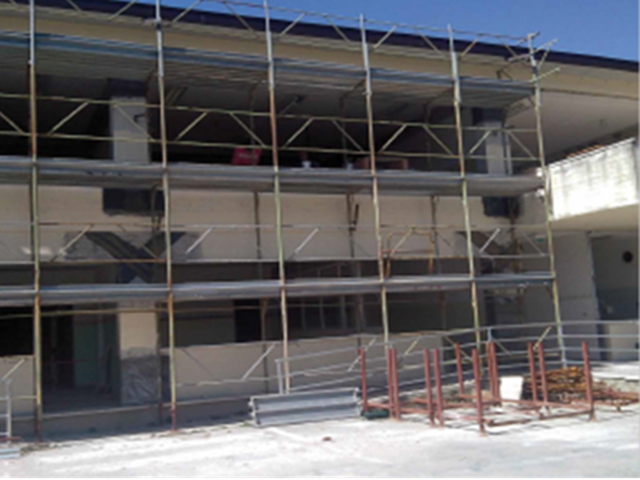REINFORCEMENT AND REHABILITATION OF HISTORIC MASONRY


FRP-FRCM-SRG SYSTEM Line
Engineering solutions for the restoration, structural reinforcement, placing in seismic safety of civil and industrial building, schools, hospitals, parks, bridges, viaducts, cultural heritage, places of worship.
OVERVIEW
The term composite system FRP refers to materials composed of high-resistance, continuous fiber fabrics immersed in a polymeric matrix. Since the nineteen-fifties, these materials have been used worldwide on a large scale in aeronautical and mechanical engineering because of their very high level of mechanical performance. More recently, they have been used in other industrial sectors, and especially in the field of structural reinforcement of concrete, metal and masonry for civil and industrial buildings, bridges, tunnels, monuments.
The principle characteristics of the composite systems are high resistance to tensile strength , very good ductility and resistance to corrosion, high flexibility and very limited weight and thickness.
In the last years have been introduced in the international market different composites system like FRCM (carbon, AR glass and basalt grids) and SRG (UHTSS high resistance steel fabric) used with an inorganic matrix (like cementitious or structural lime ) for structural reinforcement of building. The main advantages of these systems are high resistance, ductility, fire resistance, easy application on rough and moist surfaces.
DESCRIPTION

The FRP SYSTEM are wet lay up system using high-density carbon-fiber and pultruded laminate, E-AR glass or aramid strips glued to supports with special structural adhesives RESIN with superior mechanical characteristics. With both the plating and the wrapping methods of application, the system reinforces the structure where it is necessary to improve or restore static conditions, by increasing their resistance, load-bearing qualities and ductility, but without overloading the structure.

The FRCM-SRG SYSTEM are composite materials using carbon (C-NET) , AR glass (G-NET) , AR basalt (B-NET) grids and steel fabric (STEEL NET) applied with special high resistance and adhesive mortar CONCRETE ROCK and LIMECRETE. These systems are particularly suitable for structures reinforcing with uneven, rough and moist surfaces (concrete and masonry), for fire resistance and with reduced weight and thickness. These systems are also compatible with historical building and monuments.
MAIN USES
The main applications of the FRP-FRCM-SRG SYSTEMS are in the following areas:
- Reinforcement of deflected structures like beams, slabs, knots, pillars;
- Reduction of loaded deflection, increase of load-bearing capacity, reduction of cracks under loading;
- Reinforcement of compressed structures like walls, pillars, columns, chimney stacks;
- Increase of compressive strength, flexural-compressive strength and ductility;
- Improvement of structures in seismic zones without increasing weight;
- Reinforcement and consolidation of weakened and damaged structures;
- Suitable for restoration of historical building like vaults, arches, domes, deflected masonry panels, etc…
In general, the reinforcing systems are suitable for concrete such as civil and industrial buildings, viaducts, bridges, car-parks, tunnels, hospitals, for masonry such as constructions, historical buildings and monuments, places of worship, for wood and metal structures.
ADVANTAGES
According with the system used many advantages are manifest:
- High level of mechanical characteristics and performances;
- High chemical resistance to corrosion;
- Increase of resistance to stress;
- Reliability and long-life of the reinforced building;
- Excellent applicability in moist environments;
- High tear resistance also on rough and uneven substrates;
- Reduced weight and thickness of the reinforcement;
- Easily draped of fabrics and grids over structures and adapted to complex forms and uneven surfaces;
- Easy application of the system without complex on-site management;
- Limited reduction of permeability in frescoed vaults and walls;
- Reduced time and costs of the works
